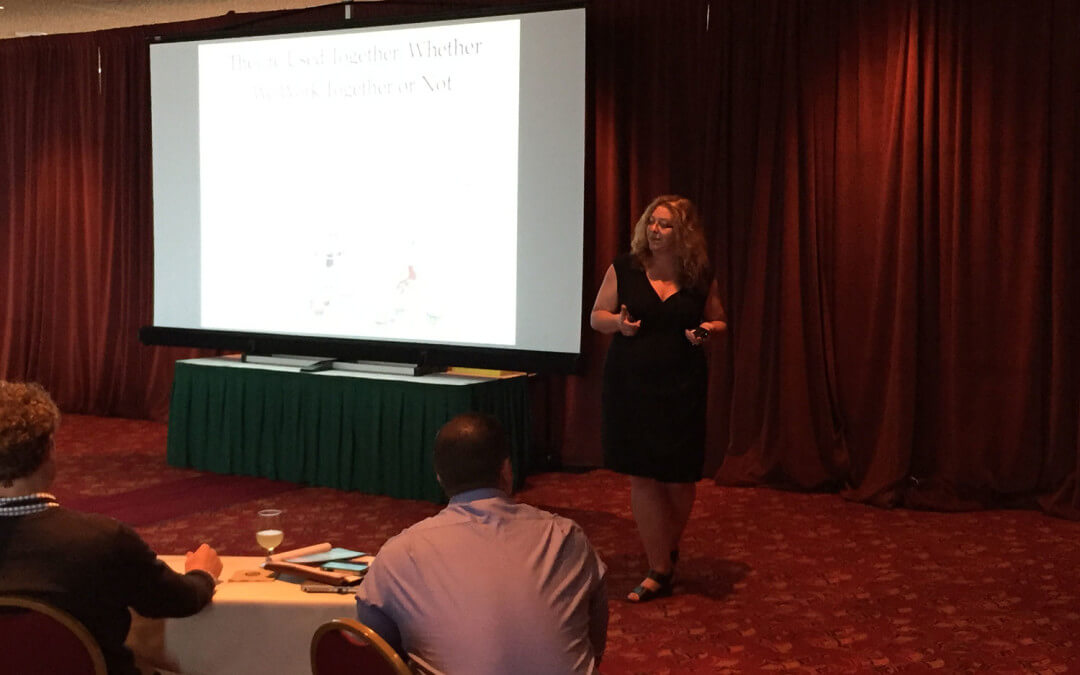Raleen Gagnon joined the slate of speakers Wednesday afternoon in a discussion surrounding how best to capitalize on intelligence functions.
Agenda
- How are intelligence functions leveraged today?
- How do those functions align for greater impact?
- What’s the best approach to higher intelligence?
“A point of view can be a dangerous luxury when substituted for insight and understanding.” –Marshall McLuhan
Intelligence functions
- Market—what happens outside the business (economic, regulatory issues)
- Competitive—competitor specific; inquiries may be prompted by market intelligence data
- Business—taking data within the organization and using it as a baseline (best practices). How does this impact operations and opportunities?
- Collaboration of the above functions
“CI is the core of competitive strategy” –Arik Johnson
Of these listed functions, competitive intelligence remains at the center—the core of strategy as considerations of other intelligence come into play, but all three need to be examined to make accurate assumptions.
The functions are used together, whether we work together or not.
Sometimes it is a matter of how entities define “market intellignence”, for example. But in order to redefine solutions and know how to best serve clients, it is essential to know what is going on in the broader marketplace.
It is important to have understanding of a broad view of the market.
And, there are differing levels of collaboration in organizations.
Examples of how functions are used together:
- Location strategy planning
- That executive who always knows the answer and then argues with everything you report back
- “Elf on the Shelf”—stories are created, self-published, alternative versions appear. Pinterest and other social media had influence with a business intelligence team—Business intelligence had been overlooked as influential. The cost of not making the right decision due to lack of listening is a problem: too much of CI is qualitative
Building a case for internal alignment
Strategic guidance:
- Market analysis—customer insight, competitor insight
- Business analysis—measured impact, scenario models (defining of opportunity costs)
The process flow=industry benchmarking, cost pricing strategy, process optimization, and resource/product planning
Don’t miss business opportunities by only looking at requested information—look beyond that.
What’s in this alignment for us?
Better visibility
- Higher stakeholder awareness
- Broader audience
- The ‘#secrethashtag’
Better leverage
- Speaking their language
- Two sets of numbers are better than one
- Multi-level validation around recommendations
Quantifying insights for actionable intelligence
What’s the cost/impact of a current situation? What are leadership assumptions of the situation? What’s the noise on the ground?
Competition
What is the companrable situation? What were the results of initiatives? Based on that performance, what are potential outcomes against internal dynamcs?
Clients
Same clients? Different? Different location? Size and length of deal? Approximates? Cultural alignments and pareners? Also consider add-ons.
Market
Currency changes? Downsizing elsewhere? Regulatory changes, environmental conditions? Migration patterns?
Analysis
What prompted the request? Who asked for it/ What do they already know, and what are the assumptions? Knowing things in advance will be helpful.
Deliverables
Answer the question not asked. Every recommendation should have an opportunity cost
Positioning
Cobrand your report, send to additional function leadership, and consider opportunity cost
What’s next?
You don’t need to re-org to align, it can be budgetary shifts. Know what numbers work for you and how you get them. Set up a meeting and develop a cadence
